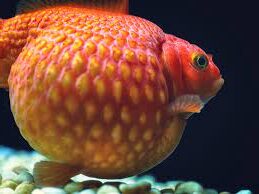
How to Litter Train Your Ferret in 5 Easy Steps
Contents
- 1 Step 1 – Introducing a litter box
- 2 Step 2 – Warming up to the litter box
- 3 Step 3 – Litter training by example
- 4 Step 4 – Cleaning out the litter box
- 5 Step 5 – What if my ferret doesn’t use the litter box?
- 6 Ferrets are smart and trainable, so follow these steps and you’ll soon have a fully litter trained ferret.
- 7 Conclusion
Ferrets are smart and trainable, so follow these steps and you’ll soon have a fully litter trained ferret.
Step 1 – Introducing a litter box
The first thing you’ll want to do is introduce your ferret to their new litter box. There are a few things that are important here:
- Place the litter box in a quiet area where there will be minimal distractions and noise. If possible, try placing it in a corner so that they have no other choice but to use it!
- Make sure that the size of your ferret’s new home is neither too big nor too small for him/her; this will make things easier on both you and them later on down the line (pun intended).
Step 2 – Warming up to the litter box
The next step is to make sure that your ferret has easy access to the litter box. This may mean moving it closer to where they tend to hang out or giving them more room to move around in. If you have multiple ferrets, consider placing one litter box per ferret in different locations so that each one has privacy when using their toilet.
The location of your ferrets’ litter boxes will depend on what works best for your household and how many pets you have in general, but there are some basic guidelines that will help ensure success:
- Place them near where they eat and sleep so they can become familiar with the area as part of their routine; this will make it easier for them once training begins later on!
Step 3 – Litter training by example
- Show the ferret what you want them to do.
- Watch the ferret and reward good behavior.
- Show the ferret what you don’t want them to do, but don’t punish bad behavior.
- Don’t give up! Keep trying until your ferret gets it right!
Step 4 – Cleaning out the litter box
- Clean the litter box daily.
- Don’t use scented litters. They can cause your ferret to have an upset stomach, and some of them are even toxic!
- Don’t use a plastic litter box. Ferrets tend to chew their way out of these things, so you’ll be spending more time repairing than cleaning!
- Consider getting two small-sized boxes rather than one large one–it’s easier for your little fuzzball to find its way around when there isn’t much space in which it can get lost or confused within the confines of its home away from home (you).
Step 5 – What if my ferret doesn’t use the litter box?
If your ferret is not using the litter box, there are a few things you can do. First, make sure that you have followed all of the steps listed above. If so and your ferret still isn’t using their litter box, try switching to another type or brand of litter (if possible).
You may also want to move it from where it was originally placed–ferrets are creatures of habit and may avoid going in an area where they feel uncomfortable or unsafe. This could be because there’s too much activity going on around them or because they feel like someone could reach over them while they’re doing their business!
Ferrets are smart and trainable, so follow these steps and you’ll soon have a fully litter trained ferret.
Ferrets are smart and trainable, so follow these steps and you’ll soon have a fully litter trained ferret.
- Litter box training is easiest when you start with a young ferret. If your ferret is older, it may take some time for them to get used to their new environment and learn how to use the litter box properly. However, if this is something that needs done quickly (such as with an elderly ferret), then training can be sped up by placing their food in the same place as their litter pan every day until they start going there on their own regularly
Conclusion
If you follow these steps, your ferret will soon be litter trained. You may have to repeat this process a few times before your ferret gets it right, but once they do, it will be worth all



Average Rating